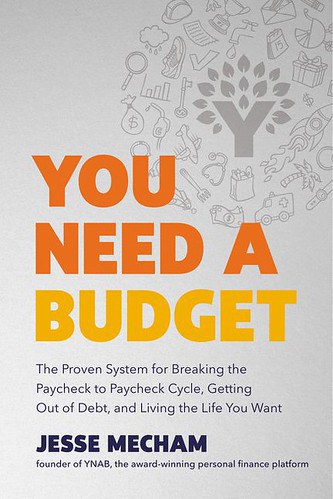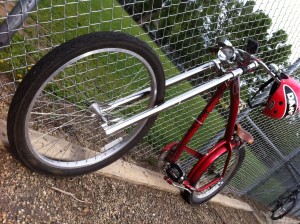The Ultimate Guide to RESPs For New Parents

When your child is born, you are most likely focused on keeping your baby alive. I’ll always remember the day the doctor told my husband and myself that they would discharge us soon, just 24 hours after the birth of my daughter. We were then handed over 30+ documents to sign and fill out.
Name your child, sign up for government services, issue a social security number (SIN), and what vaccinations are needed. It would be an understatement to say that it was overwhelming. After coming off the painkillers it is highly likely that I have made at least three errors on each piece.
Before I had my daughter, I wrote down a list of the essential things I would need to do in the first few months after her birth. I had to add my daughter to our will and assign her as the beneficiary of all of my documents at work.
That’s right. It’s true. I started thinking about the education of my child while still in utero, and it’s a good thing that you are doing so too.
What is a REGISTERED EDUCATIONAL SAVINGS PLANS (RESP)?
A RESP is an account that you can use to save for your child’s future education, if they decide to go to college or university. You can make contributions on behalf of your child or relative as soon as they receive a SIN.
The RESP is registered with the Canada Revenue Agency and has similar limits as your Registered Retirement Savings Plan or Tax Free Savings Account. There is one significant difference: there are no contribution limits per year. The maximum contribution that a beneficiary can receive over their lifetime (your child) is $50,000.
I am sorry for all the acronyms.
Some RESPs are eligible for grants from the government. Yay!
Grants are available for:
- Canada Education Savings Grant
- Canada Learning Bond
- You may also be eligible for any education saving programs in your province
Please note that if you receive additional funding through these grants, the government’s extra contributions do not count against your lifetime limit of $50,000. The money you put into your education fund is tax-free as long as it stays in the account.
WHERE CAN ONE OPEN A RESP?
The process of selecting a provider to manage your RESP will be similar to choosing a financial institution that you would use for your investments or money. Do your research to learn about any fees or limits on contributions. Nearly all banks, credit unions and investment companies offer RESP options.
You’ll want to understand the various types of RESP plans before you select a financial institution. You can choose from three different options: a family plan or an individual plan. Here are the differences between the three plans to clear up any confusion that has been created.
- Families with more than one child will benefit from family plans. If you choose a family plan you can use the RESP contributions for any child that is related to you (whether it’s your own kid or grandkids).
- Individual plans are ideal for those who do not have a relationship with the beneficiary. Remember that even if you and your best friend open an RESP together, the maximum amount for the beneficiary will still be $50,000.
- A group plan is a tool for investing provided by the company, not a financial institution. A group plan allows multiple people to contribute with regular payments or grants.
You should be able get help from your financial institution. To be sure, ask these questions to your financial advisor before making a final decision.
-
Do you charge fees for your account?
-
Does there have to be a minimum contribution?
-
Do regular contributions have to be made?
-
What are my investment choices?
Compounding is an excellent way to grow your contributions. To open an RESP, you only need your child’s SIN, your own SIN, and the birth certificate of your child. It is free to open an RESP.
WHAT HAPPENS IF MY CHILD DOES NOT CHOOSE POST-SECONDARY EDUCATIONAL EDUCATION?

A RESP is only open for a maximum of 35 years and cannot accept contributions beyond 31 years. If your child is not sure whether they want to go to post-secondary school, they can wait until they are 35 years old to decide.
When your child turns 36, and says “MOM!” You know I told you. There are several options if you say, “I’m not going back to college.”
- Transferring money from one RESP into another is possible if you have a younger child or relative that could benefit.
- Transferring money into an RRSP is possible, but there are a few conditions. Your RESP must be older than 10 years, and you must also have sufficient contribution room available in your RRSP during that tax year.
- You can close the plan at any time and get your contributions refunded. You’ll have to reconsider the conditions in this case. First, you’ll have to return the money that was given by those grants. You’ll also have to pay tax on any earnings that you made through your RESP.
How much should I try to save for my child’s college tuition?
You’ve just read this article and you only think of the fact.
- $50k is a large sum of money or
- A post-secondary education costs more than $50,000
I can understand your concerns.
Inflation is a great way to determine how much you should be saving for your child’s education. Currently, the cost of a 4-year university program is $25,852. Here’s an example.
In 2038, when your child turns 18, and we assume a 2.5% inflation rate, the cost of a 4-year university degree could be around $39,335. This number does not include books, housing or transportation.
If you don’t receive grants or invest your money, you would need to save approximately $2,185 per year to cover only tuition.
The investment alone can help you maximize your RESP earnings. Using a calculator to calculate compound interest, I came up with the following numbers.
If you add the CESG grant to your contributions, then, for example, the annual contribution between $500 and $2500 will be matched by 20%. The maximum CESG allowance per child is $7,200.
WHAT IS the setup of my RESP?
I use wealthsimple to manage my child’s RESP. The platform was chosen because it is low-cost, I have a lot of investments and my husband and me can monitor and make automatic contributions. Wealthsimple allows you to calculate how much you will earn during the time period that you want to save. This can be used to adjust your numbers and reach your goal.
Ask questions about the institution that will be managing your child’s RESP to make sure you’re not paying unnecessary fees and you can trust them. You should invest your money according to your Risk Profile. Also, don’t miss out on any government grants based on the amount of your annual income.
Saving for your child’s future is a matter of personal choice. There are no absolute numbers that define a parent. Savings are a great investment in your child’s future, whether it is for their college fund, or to ensure they stay healthy and well-fed throughout their life.










+ There are no comments
Add yours